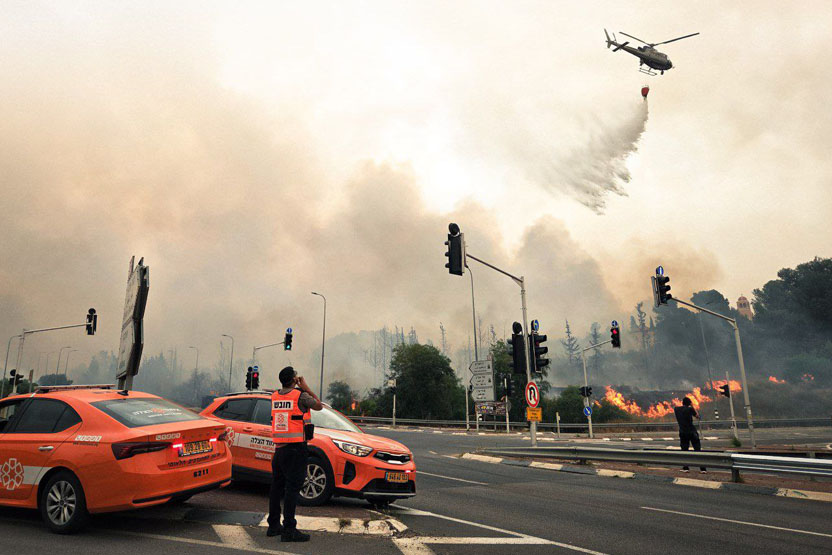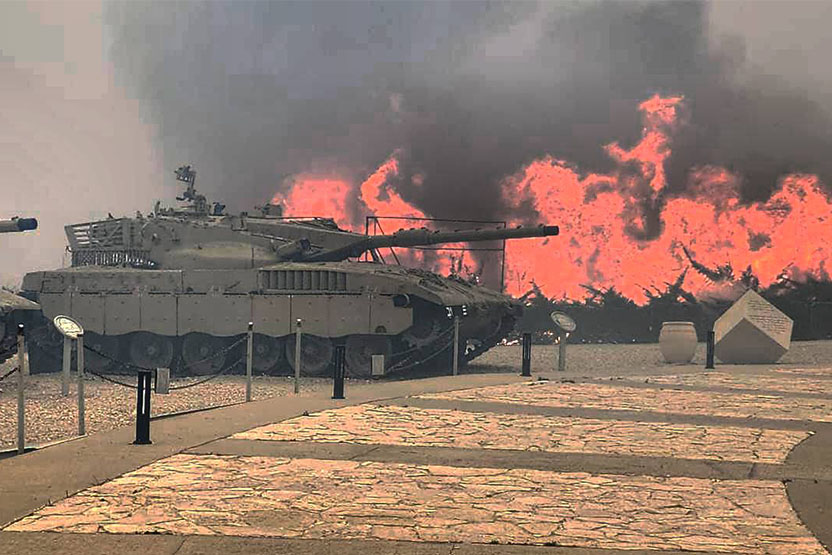Widespread fires in the heights and forests of Jerusalem: The sinister alliance of war, occupation and climate change

In one of the most intense wildfires in the Middle East in recent decades, massive flames swept through the mountainous areas surrounding Jerusalem. Thousands of hectares of forest were consumed, dozens of homes evacuated, and major highways shut down. What sets this disaster apart from other regional crises is the growing role of climate change and escalating environmental stress in fueling and spreading the blaze.
A Spark in a Powder Keg
The fire began in the forested area of Eshtaol and quickly spread through the Judean Hills. Hot, dry winds—coinciding with an unprecedented heatwave in Israel—caused the flames to spiral out of control.
According to emergency authorities, over 50 firefighting teams, aerial units, and even army forces were mobilized to contain the fire. Yet the fire’s speed and its proximity to residential zones triggered a nationwide alarm.
New Climate, New Disasters
Israel has repeatedly experienced the effects of global warming in recent years. Data from the Israel Meteorological Service show that the country’s average annual temperature has risen by nearly 1.5°C over the past decade. Hotter summers, drier winters, and a dramatic drop in rainfall have left soils parched and vegetation brittle—an explosive mix for wildfires.
A climate change expert says:
"We can no longer consider these events as simply natural occurrences. The conditions created by climate change are breeding grounds for disaster. What we’re witnessing today is a direct consequence of poor policy choices and ignoring decades of scientific warnings."
Unprotected Forests and Flawed Policies
Beyond extreme heat, another factor has worsened the situation: lack of environmental management. Many forests around Jerusalem have lacked structured plans to reduce fire fuel—such as dry wood and accumulated leaves on the forest floor—in recent years.
One volunteer responder reported that there has been no comprehensive program for monitoring and clearing these areas during high-risk seasons. The expansion of residential construction near forest zones has also blurred the boundary between human settlements and nature, increasing the risk of human and economic losses.
Unchecked Settlement Expansion: Development That Harms Itself
Alongside global warming and declining rainfall, one of the key factors contributing to the recent wildfires around Jerusalem is the unchecked expansion of Israeli settlements. These rapid and poorly supervised developments have not only disrupted the region’s ecological balance but also weakened the infrastructure needed for crisis prevention.
According to data from international organizations, many new Israeli settlements are built without thorough environmental assessments, in violation of urban planning principles, and in ecologically sensitive areas — places where forests, hills, and natural pastures once provided a stable environmental foundation.
This type of development brings several direct and damaging consequences:
Destruction of vegetation and increased flammable materials: To build new settlements, large-scale deforestation has taken place, and parts of the Judean Hills — once covered with fire-resistant vegetation — have been turned into construction zones. These abandoned or semi-developed lands, often overgrown with dry vegetation and littered with construction debris, become potential ignition points.
Increased friction between humans and nature: The unregulated sprawl of settlements into natural areas has erased the vital buffer between human habitation and natural ecosystems. Fires that would previously have been contained within forests now quickly spread to homes and infrastructure.
The fire spreads to various urban and military sectors.
Lack of crisis-response infrastructure: Many of these newly built settlements lack early warning systems, emergency evacuation routes, or adequate firefighting resources. These quickly and cheaply designed areas fail to consider environmental and climate needs, turning every natural hazard into a full-blown disaster.
Intensification of local heat (Urban Heat Island Effect): The extensive use of concrete and asphalt, coupled with the removal of vegetation, has created heat islands in these areas — raising local temperatures, worsening aridity, and making wildfires more likely to ignite and spread.
In summary, unregulated settlement expansion not only increases the risk of wildfires but also suffers deeply from their consequences.
In recent days, images have emerged of burned homes in these very settlements — developments driven by environmental disregard, now being challenged by nature itself.
A Global Crisis, A Local Flashpoint
Though the Jerusalem blaze might appear local, it is part of a broader global pattern. From the forests of Greece and Turkey to those of California and Australia, massive wildfires have become symbols of the climate change era.
The United Nations has previously warned that if global warming continues unchecked, many parts of the world could face a year-round wildfire season—and Israel is no exception.
There Is No Alternative to Urgent Action
Following the fires, Israeli authorities have appealed for international assistance. But experts stress that extinguishing the flames is only a small part of the challenge; the core issue lies in infrastructure preparedness, improved natural resource management, and most importantly, active engagement in global efforts to fight the climate crisis.



Comment
Reply